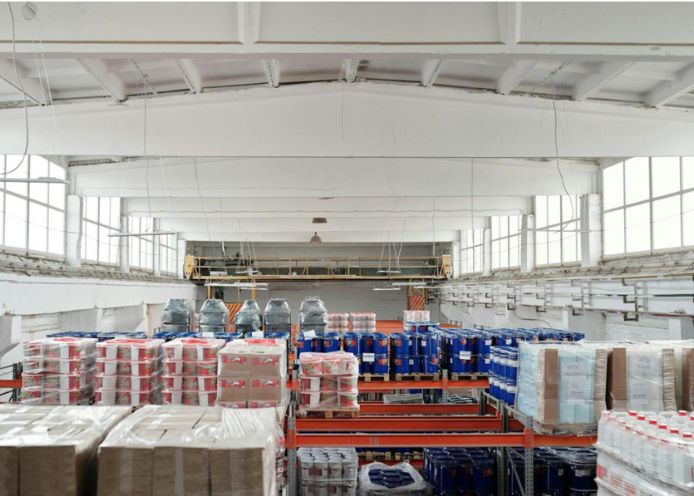Mechanized capacity permits organizations to robotize their coordinated factors by establishing care of hardware, for example, stacker cranes, transports or self-impelled swings (monorail frameworks).
In a setting where strategy 4.0 requires more noteworthy speed of coordinated factors tasks and decreased blunders to lessen costs, mechanized distribution centres have become the best answer for staying severe.
In this article, we look at the available robotization frameworks (for receptacles and beds), present their benefits, and clarify how to pick the one that best suits your necessities.
Direct Access Or Minimal Framework?
Mechanized capacity, rather than manual capacity, is described by the robotization of various coordinated activities: capacity, delivery, transport, etc.
There are various sorts of mechanized stockrooms (for receptacles and beds), every one of which can be grouped into two classifications depending upon the racking picked: direct access (single profundity) or reduced (twofold profundity or more).
Robotized direct-access capacity gives complete openness to products, accelerating capacity and request-picking assignments. The conservative framework makes it conceivable to store a more noteworthy number of items because of the improvement of the space accessible in the distribution centre.
Direct access or a smaller framework? Which one to pick? To go with your decision, you should consider a few components, for example, the number of references made due, units for every one of them, the space accessible, the turn and stream of merchandise needs, and so on.
Also Read: Development of Computer Systems
The different robotized stockpiling frameworks
The kinds of mechanized stockpiling vary depending on the heap unit to handle and the sort of racking.
Bed Frameworks:
Mechanized capacity for beds with stacker crane. It is the most broadly involved mechanized capacity framework for beds, as it tends to be made out of exemplary single- or twofold profundity racking and dynamic racking. To this end, a bed stacker crane is introduced in every path to embed and separate beds from their areas. Various models of stacker cranes are accessible and available, with highly fluctuating aspects and attributes.
Capacity with programmed Bed Transport framework. The Bed Transport framework, in its utterly mechanized rendition, incorporates an independent transport set in the capacity channels, which positions every one of the beds in the most profound area of the minimal racking. This framework gives us a more noteworthy stockpiling limit while acquiring deftness. There are two methods for moving the bed transport to the racks: a stacker crane or an exchange transport. The decision relies upon the volume of merchandise received and given, the number of references and the number of beds per reference or cluster.
Canister Frameworks:
Mechanized capacity for receptacles with miniload. The most well-known computerized canister capacity is racking explicitly intended for receptacles. A miniload stacker crane is set in every capacity path, which embeds and separates items from their areas. At the front of the distribution centre, picking stations are set in the mood for getting merchandise on an “item to man” basis.
Computerized capacity for canisters with the van framework. In the past, this arrangement utilized a bus framework rather than the miniload stacker crane. The bus framework is additionally finished, similar to the mini-load setup, with at least one picking station where administrators get and deal with the receptacles.
These frameworks can coincide entirely in a similar stockroom. Moreover, computerized capacity frameworks can incorporate mechanical hardware like transports, lifts, monorail frameworks, etc.
The Advantages Of Mechanized Stockpiling
Having a mechanized stockroom enjoys a few calculated benefits, including:
High Efficiency
Material dealing with hardware can work 24 hours per day, 7 days per week, considering a constant and continuous progression of products in and out.
Well-being Of Administrators And Merchandise
Mechanized capacity evades drawn-out and unergonomic undertakings for administrators. Additionally, the mechanical and programmed treatment of merchandise keeps them in fantastic condition, avoiding shocks and mishaps.
Stock Control
A fundamental piece of any mechanized distribution centre is stockroom-the-board programming (WMS), which distinguishes and screens stock continuously to guarantee consistent stock. Stock administration is accordingly thorough, as is item discernibility.
Cost Decrease
Computerization permits administrators to zero in on higher-worth-added undertakings. Moreover, upkeep costs are diminished because of less mileage on taking care of gear.
Beneficial double-dealing of room. Contrasted with traditional frameworks, computerized frameworks offer better extra room efficiency, a more prominent stockpiling limit and a more prominent yield, all on a decreased surface region.
Robotized capacity frameworks are the best answer for rapidly and securely delivering free-get, picking, and DE blundering freedoms.
Also Read: What Is Custom Web Development?

